By Thomas G. Wilkinson, Jr. & Thomas M. O’Rourke
 According to some estimates, discovery costs account for between 50 and 90 percent of total litigation costs. In an attempt to streamline federal discovery, the Judicial Conference Committee on Rules of Practice and Procedure (the “Standing Committee”) has published proposed amendments to the Federal Rules of Civil Procedure. Unlike previous proposed amendments, which have sought to broaden discovery, these proposed rules significantly restrict the scope of discovery and the presumptive number of discovery requests and depositions available.
According to some estimates, discovery costs account for between 50 and 90 percent of total litigation costs. In an attempt to streamline federal discovery, the Judicial Conference Committee on Rules of Practice and Procedure (the “Standing Committee”) has published proposed amendments to the Federal Rules of Civil Procedure. Unlike previous proposed amendments, which have sought to broaden discovery, these proposed rules significantly restrict the scope of discovery and the presumptive number of discovery requests and depositions available.
If the proposed amendments are adopted, discovery requests would be limited to the parties’ “claims and defenses” and tailored to be:
proportional to the needs of the case considering the amount in controversy, the importance of the issues at stake in the action, the parties’ resources, the importance of the discovery in resolving the issues, and whether the burden or expense of the proposed discovery outweighs its likely benefit.
In addition, absent agreement between the parties or a court order, parties would be limited to 5 depositions, 15 interrogatories and 25 requests for admission.[1]
The proposed amendments represent an important step in the effort to control pretrial costs and delay in federal litigation. However, the restrictions imposed on the scope of discovery and the availability of discovery tools have been subject to criticism. One critic, U.S. Senator Christopher Coons of Delaware, Chair of the Subcommittee on Bankruptcy and the Court, predicted that these limitations would have a negative impact in smaller cases and “could mean that responsible parties will remain unaccountable—not because the plaintiff’s allegations are untrue, but because plaintiff lacks the evidence to prove them.” See Todd Rugur, Discovery Rule Changes Greeted with Skepticism in Senate, Nat’l Law J. (Nov. 11, 2013).
For example, consider the following hypothetical case: A history professor (“Plaintiff”) brings a federal employment discrimination action alleging that her former employer, a university, denied her tenure because of her gender. The university’s decision was made by a three-member panel, but it was based on the recommendation of a committee composed of five faculty members in the history department. Her theory is that she was held to a different standard than similarly situated male professors who received tenure and that certain members of both the committee and the panel held gender stereotypes about her that impacted their decision. She also alleges that her direct supervisor, who was not on the committee or the panel, gave her negative performance reviews due to her gender, which were considered by the committee and the panel.
As discussed below, under the proposed amendments, Plaintiff could face some difficulty obtaining the necessary discovery to sustain her claim.
The Shifting Scope of Rule 26
Under the current rules, discovery is limited by the principle of proportionality. Fed. R. Civ. P. 26(b)(2)(C)(iii). The proposed amendments, however, take this familiar limiting principle and use it to define the scope of discovery. See Proposed Amendments, at 296. This is a significant rule change that may increase discovery costs and undermine the pursuit of legitimate discovery in federal cases.
“Proportionality” is an amorphous standard that will inevitably lead to unpredictable and wide-ranging interpretations. For example, before the parties have exchanged responsive information, it is difficult to assess how beneficial a discovery request will be “in resolving the issues” or “the likely benefit of discovery” requests. Early in the discovery process, rather, the “amount in controversy” and the “importance of the issues at stake” will likely be the predominate factors used to assess the proportionality of a request.
Judges and parties may significantly disagree about the proper scope of discovery in a case that is perceived by the court to be worth X dollars when the party values the same case at Y dollars, or that involves a particular issue that may generate important precedent for similar cases in the future. Differing views about the reasonable extent of discovery given the money or issues at stake will yield varying results and encourage early and expensive motion practice regarding the basic parameters of discovery. For instance, how “important are the issues at stake” in the Plaintiff’s case? The answer depends on who you ask.
Moreover, suppose Plaintiff is seeking $300,000 in the lawsuit. Is she entitled to discovery regarding all tenure decisions made by the university within the last 5 years or will her request be limited in time and scope? What about e-mails sent or received by the members of the panel, the committee or her supervisor around the time of the tenure decision? Under the proposed amendments, Plaintiff’s relatively low damage number could inhibit her ability to fully investigate these issues and potentially prevent her from uncovering critical evidence.
Restricting the Number of Depositions
The Standing Committee’s proposed reduction to the presumptive number of depositions is based, in large part, on statistics reflecting that “less than one-quarter of federal court civil cases result in more than five depositions, and even fewer in more than 10.” Proposed Amendments, at 268. These statistics, however, are drawn from the number of depositions taken by attorneys in closed cases that featured at least one deposition. This data, therefore, includes cases that would have produced more depositions but were resolved early through settlement or motion practice. Further, with one exception, these statistics also reflect that more than five depositions are taken by one side or the other in 40% of cases involving an expert and non-expert deposition.
Considering these issues, the accuracy of the Standing Committee’s conclusion that the new presumptive limit will have “no effect in most cases” is subject to debate. Id. at 268. If courts view the presumptive limit as an inflexible barrier to more extensive discovery and adopt a “one size fits all” approach to deposition discovery, parties will be denied necessary and relevant evidence. This possibility may encourage some parties to employ the presumptive limit as a tactical device to stall and constrict legitimate deposition requests.
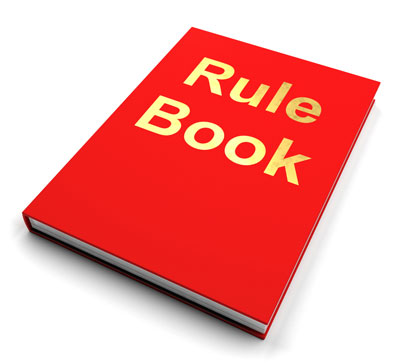 Indeed, in our hypothetical case, there were eight individuals involved in the decision to deny Plaintiff tenure. This number does not include any of Plaintiff’s other colleagues, her supervisor or potential expert witnesses. With a presumptive limit of five depositions, Plaintiff could be significantly limited in her ability to depose material witnesses. The university, for example, could convince the Court that an employment discrimination case involving $300,000 does not justify extending the presumptive limit and leave the Plaintiff without important information and ammunition for purposes of settlement or trial.
Indeed, in our hypothetical case, there were eight individuals involved in the decision to deny Plaintiff tenure. This number does not include any of Plaintiff’s other colleagues, her supervisor or potential expert witnesses. With a presumptive limit of five depositions, Plaintiff could be significantly limited in her ability to depose material witnesses. The university, for example, could convince the Court that an employment discrimination case involving $300,000 does not justify extending the presumptive limit and leave the Plaintiff without important information and ammunition for purposes of settlement or trial.
Instead of cutting the presumptive number of depositions in half, it may be more appropriate to amend Rules 30 and 31 to expressly allow parties to file motions to limit the number of an opponent’s depositions based upon the proportionality principles set forth in Rule 26(b)(2)(C)(iii). This compromise would enable litigants such as Plaintiff to take more than 5 depositions without having to seek the approval of their opponent or the court, but where warranted provide a vehicle for a party to urge the court to restrict the scope of deposition discovery.
Restricting the Number of Interrogatories
Similarly, the proposed amendment to Rule 36 restricts the presumptive number of interrogatories available, reducing the number from 25 to 15 (including subparts). In all but the most straightforward cases, 15 interrogatories may be insufficient. Indeed, the Plaintiff in our hypothetical case would be hard pressed to compose 15 interrogatories to cover: the university’s policies and procedures for making tenure decisions; the decision reached in her case; the individuals involved in that decision; and the university’s tenure decisions with respect to similarly situated male professors.
As a result, parties like Plaintiff may have to resort to early and expensive motion practice to secure additional interrogatories, particularly considering that other discovery tools, such as depositions, are not as freely available under the proposed amendments. If applied inflexibly, this presumptive limit will distract the parties (and the court) from the substantive issues in the case and unnecessarily constrict legitimate discovery of relevant evidence.
The proposed amendments, therefore, if adopted, should clearly communicate that the presumptive limits are not a “one size fits all” approach to the discovery needs of all cases or  particular classes of cases.
particular classes of cases.
The Proposed Amendments Will Impact More Than Just Plaintiffs
The proposed amendments pose a significant challenge for all federal litigants, not just plaintiffs. Although the above hypothetical involved a plaintiffs’ case, defendants may encounter similar hurdles in securing necessary discovery, particularly in cases involving multiple plaintiffs or witnesses, such as in class or collective actions. If the new presumptive limits for depositions and written discovery are applied inflexibly, defendants may be unable to secure the information necessary to mount an adequate defense. While the proposed amendments have for the most part been welcomed by defense and corporate counsel, the additional motion practice necessary to obtain relevant information may in some cases serve to drive up rather than reduce costs and further delay resolution of cases.
For those interested in weighing in on the proposed amendments, the Standing Committee is accepting public comments until February 15, 2014. Comments may be submitted online at http://www.uscourts.gov/RulesAndPolicies/rules/proposed-amendments.aspxor by mail to:
The Committee on Rules of Practice and Procedure
Administrative Office of the United States Courts
One Columbus Circle, NE
Washington, DC 20544
[1] Along with restricting the scope of discovery, the proposed amendments also clarify the standard for imposing sanctions for a party’s failure to preserve discoverable information. Under the proposed amendments, Rule 37(e) would be rewritten to reflect that only willful or bad faith destruction of evidence can result in sanctions, unless the “opposing party’s actions . . . irreparably deprived a party of any meaningful opportunity to present or defend against the claims in the litigation.” Id. at 315. This change is designed, in part, to ensure that potential parties do not engage in unnecessary and expensive “overpreservation” for fear of sanctions in future litigation.
__________________________
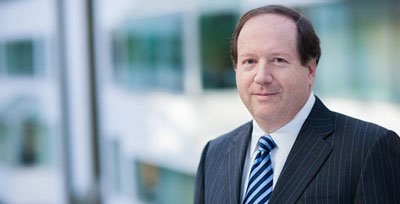 Thomas G. Wilkinson, Jr., is a member of Cozen O’Connor in Philadelphia, where he practices in the Commercial Litigation Department (twilkinson@cozen.com). He is the Immediate Past President of the Pennsylvania Bar Association and past chair of its Civil Litigation Section.
Thomas G. Wilkinson, Jr., is a member of Cozen O’Connor in Philadelphia, where he practices in the Commercial Litigation Department (twilkinson@cozen.com). He is the Immediate Past President of the Pennsylvania Bar Association and past chair of its Civil Litigation Section.
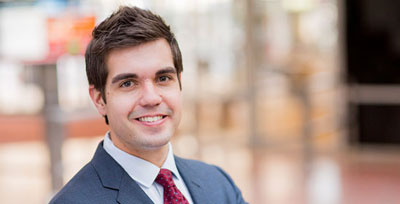 Thomas M. O’Rourke is an Associate at Cozen O’Connor, where he practices in the Commercial Litigation Department (tmorourke@cozen.com). For a more detailed analysis of the proposed amendments, see their full length article in the Pennsylvania Bar Association Federal Practice Committee Newsletter for November 2013.
Thomas M. O’Rourke is an Associate at Cozen O’Connor, where he practices in the Commercial Litigation Department (tmorourke@cozen.com). For a more detailed analysis of the proposed amendments, see their full length article in the Pennsylvania Bar Association Federal Practice Committee Newsletter for November 2013.
 Everyone’s parents had a seemingly different remedy for the hiccups. I had to hold my arms straight in the air while my mother slowly poured a glass of milk into my mouth. There would be a brief pause — she and I would stare at one another wondering if I was cured. After a few seconds, I’d invariably hiccup some milk. My mom and I did this at least a hundred times with limited success. Despite probabilities, I’m still convinced it works. It is what I learned.
Everyone’s parents had a seemingly different remedy for the hiccups. I had to hold my arms straight in the air while my mother slowly poured a glass of milk into my mouth. There would be a brief pause — she and I would stare at one another wondering if I was cured. After a few seconds, I’d invariably hiccup some milk. My mom and I did this at least a hundred times with limited success. Despite probabilities, I’m still convinced it works. It is what I learned. next thing that comes from the attorney’s mouth is the cure for the hiccup: Strike that. As if those two words somehow make it all go away. The court reporter just transcribed: Strike that. The question you pitched is not a strike and there’s no umpire.
next thing that comes from the attorney’s mouth is the cure for the hiccup: Strike that. As if those two words somehow make it all go away. The court reporter just transcribed: Strike that. The question you pitched is not a strike and there’s no umpire.  “move to strike” after an objection. Move to strike was an effort to preserve counsel’s objection for appeal relating back to the question or answer.
“move to strike” after an objection. Move to strike was an effort to preserve counsel’s objection for appeal relating back to the question or answer.
 Penn State University recently decided to waive attorney-client privilege and cooperate in the criminal prosecutions of certain former employees. Obviously, the former employees have attempted to assert privilege to exclude potentially incriminating statements. How would it affect their claims of privilege if the university shared that confidential information with outside consultants hired during the investigation?
Penn State University recently decided to waive attorney-client privilege and cooperate in the criminal prosecutions of certain former employees. Obviously, the former employees have attempted to assert privilege to exclude potentially incriminating statements. How would it affect their claims of privilege if the university shared that confidential information with outside consultants hired during the investigation? Federal courts have disagreed on how to resolve the issues raised by the increasing role of non-employees. Other courts, however, have adopted a more restrictive approach, finding that disclosure to outside consultants results in waiver of attorney-client privilege in most circumstances. Under this approach, communications are only privileged when the consultant is hired to perform a corporate function necessary in the context of actual or anticipated litigation. While no circuit court of appeals has adopted this restrictive test, it has been applied by five district courts.
Federal courts have disagreed on how to resolve the issues raised by the increasing role of non-employees. Other courts, however, have adopted a more restrictive approach, finding that disclosure to outside consultants results in waiver of attorney-client privilege in most circumstances. Under this approach, communications are only privileged when the consultant is hired to perform a corporate function necessary in the context of actual or anticipated litigation. While no circuit court of appeals has adopted this restrictive test, it has been applied by five district courts. Given the disagreement among federal courts, it is critical for general counsel to know the standards being applied where the company is subject to litigation and to have a proactive role in protecting the privilege of confidential communications. These steps can include the use of confidentiality and retention agreements, limiting the disclosure of communications between the consultant and corporate counsel and defining which employees of the consulting firm are entitled to have access to confidential information. In the unfortunate event that communications with consultants become the subject of litigation, or even a criminal investigation, it is crucial that the decision to disclose those communications remains with the client. Now that you know the legal issues and current standards applied by courts, look for next month’s article, where we will provide an outline of suggested practical tips to protect your privilege.
Given the disagreement among federal courts, it is critical for general counsel to know the standards being applied where the company is subject to litigation and to have a proactive role in protecting the privilege of confidential communications. These steps can include the use of confidentiality and retention agreements, limiting the disclosure of communications between the consultant and corporate counsel and defining which employees of the consulting firm are entitled to have access to confidential information. In the unfortunate event that communications with consultants become the subject of litigation, or even a criminal investigation, it is crucial that the decision to disclose those communications remains with the client. Now that you know the legal issues and current standards applied by courts, look for next month’s article, where we will provide an outline of suggested practical tips to protect your privilege. A recent case, albeit one dealing with a governmental subpoena, shows that the SCA may not be the panacea that social networking sites think it is. In People v. Harris, Twitter sought to quash a subpoena it had received to produce all user information and tweets from a criminal defendant’s Twitter account. The court disagreed with Twitter that the subpoena violated the SCA. The court noted that the SCA protects only private communications and that the government can still compel a provider to disclose certain types of information if it obtains a search warrant or court order as prescribed by the statute. As a result, it ordered that certain information be disclosed over Twitter’s objections.
A recent case, albeit one dealing with a governmental subpoena, shows that the SCA may not be the panacea that social networking sites think it is. In People v. Harris, Twitter sought to quash a subpoena it had received to produce all user information and tweets from a criminal defendant’s Twitter account. The court disagreed with Twitter that the subpoena violated the SCA. The court noted that the SCA protects only private communications and that the government can still compel a provider to disclose certain types of information if it obtains a search warrant or court order as prescribed by the statute. As a result, it ordered that certain information be disclosed over Twitter’s objections. users must disseminate their information in order to maintain a reasonable expectation of privacy. While tweets are inherently public, information on other social networking sites is not. For example, Facebook users can direct certain posts to individuals or small groups of friends. Are such posts more akin to private email communications or a public Internet communication? The answer will help to determine what information is accessible to prosecutors and defense attorneys alike.
users must disseminate their information in order to maintain a reasonable expectation of privacy. While tweets are inherently public, information on other social networking sites is not. For example, Facebook users can direct certain posts to individuals or small groups of friends. Are such posts more akin to private email communications or a public Internet communication? The answer will help to determine what information is accessible to prosecutors and defense attorneys alike. Obtaining information through a subpoena may be easier said than done. Third-party subpoenas to social networking sites are likely to result in an objection on the grounds that the production of private information would violate the Stored Wire and Electronic Communications Privacy Act (SCA). The SCA prohibits Internet companies from disclosing a user’s private information absent the user’s consent. Therefore, courts have generally held that parties cannot obtain opposing parties’ social networking data through a subpoena to the social networking site.
Obtaining information through a subpoena may be easier said than done. Third-party subpoenas to social networking sites are likely to result in an objection on the grounds that the production of private information would violate the Stored Wire and Electronic Communications Privacy Act (SCA). The SCA prohibits Internet companies from disclosing a user’s private information absent the user’s consent. Therefore, courts have generally held that parties cannot obtain opposing parties’ social networking data through a subpoena to the social networking site.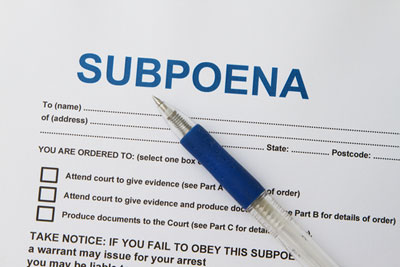 Facebook receives so many subpoena requests for user data that it currently dedicates a section of its Help Center to answering questions about civil subpoenas. Nevertheless, Facebook takes the position that it is prohibited by law from disclosing users’ private information and generally moves to quash subpoenas on that basis. Specifically, Facebook argues that the SCA prohibits it from disclosing the contents of a user’s account to any nongovernmental entity through a subpoena. For the most part, this strategy of refusing to disclose user information has been successful.
Facebook receives so many subpoena requests for user data that it currently dedicates a section of its Help Center to answering questions about civil subpoenas. Nevertheless, Facebook takes the position that it is prohibited by law from disclosing users’ private information and generally moves to quash subpoenas on that basis. Specifically, Facebook argues that the SCA prohibits it from disclosing the contents of a user’s account to any nongovernmental entity through a subpoena. For the most part, this strategy of refusing to disclose user information has been successful. Despite the relative freedom law enforcement officials have to gather evidence, prosecutors and defense counsel alike are limited as to what information they can introduce into evidence at trial. Perhaps the biggest hurdle attorneys face when attempting to admit this information into evidence is authentication.
Despite the relative freedom law enforcement officials have to gather evidence, prosecutors and defense counsel alike are limited as to what information they can introduce into evidence at trial. Perhaps the biggest hurdle attorneys face when attempting to admit this information into evidence is authentication. Unfortunately, most social networking sites do not have means by which users can download their own metadata. While sites may allow users to download content, it usually does not capture metadata, and as mentioned earlier, simple printouts of screen captures are unlikely to be admissible without additional authenticating information. Therefore, it is best to hire an outside consultant or subpoena the information directly from the social networking site.
Unfortunately, most social networking sites do not have means by which users can download their own metadata. While sites may allow users to download content, it usually does not capture metadata, and as mentioned earlier, simple printouts of screen captures are unlikely to be admissible without additional authenticating information. Therefore, it is best to hire an outside consultant or subpoena the information directly from the social networking site. All of this goes to show that the use of social media in judicial proceedings is not a one way street
All of this goes to show that the use of social media in judicial proceedings is not a one way street Meregildo not only illustrates just how important it is to keep defendants off social networking sites, but also highlights the different ethical restraints that apply to law enforcement officials and attorneys. For example, ABA Model Rule of Professional Conduct 4.1 prohibits lawyers from knowingly making false statements of fact. Similarly, ABA Model Rule 8.4 prohibits lawyers from engaging in dishonesty, fraud, deceit, or misrepresentation. While these rules do not prohibit lawyers from accessing and monitoring the public portions of social networking sites, they certainly tie their hands when it comes to accessing information that is not public. For example, a lawyer who hires a private investigator to “friend” a witness whose profile is generally private may violate ethical rules unless the investigator clearly discloses an affiliation with the lawyer.
Meregildo not only illustrates just how important it is to keep defendants off social networking sites, but also highlights the different ethical restraints that apply to law enforcement officials and attorneys. For example, ABA Model Rule of Professional Conduct 4.1 prohibits lawyers from knowingly making false statements of fact. Similarly, ABA Model Rule 8.4 prohibits lawyers from engaging in dishonesty, fraud, deceit, or misrepresentation. While these rules do not prohibit lawyers from accessing and monitoring the public portions of social networking sites, they certainly tie their hands when it comes to accessing information that is not public. For example, a lawyer who hires a private investigator to “friend” a witness whose profile is generally private may violate ethical rules unless the investigator clearly discloses an affiliation with the lawyer.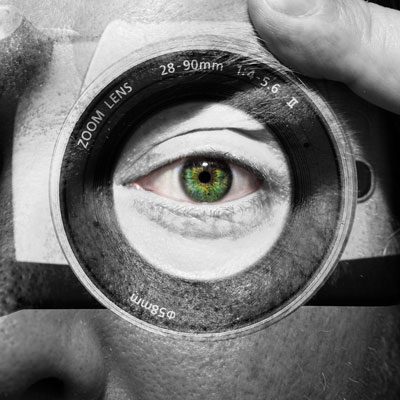
 n ongoing case. Nonetheless, the court stated that “it does not follow that every failure of a juror to abide by that prohibition will result in a new trial. Rather, as with other claims of juror partiality and exposure to extraneous information, courts must look to determine if the defendant was substantially prejudiced.” It found no prejudice in the instant situation. Instead, it agreed with the trial court’s characterization of the Internet posts as “nothing more than harmless ramblings” and “so vague as to be virtually meaningless.” Consequently, it found no abuse of discretion in the trial court’s decision to deny the motion for a new trial.
n ongoing case. Nonetheless, the court stated that “it does not follow that every failure of a juror to abide by that prohibition will result in a new trial. Rather, as with other claims of juror partiality and exposure to extraneous information, courts must look to determine if the defendant was substantially prejudiced.” It found no prejudice in the instant situation. Instead, it agreed with the trial court’s characterization of the Internet posts as “nothing more than harmless ramblings” and “so vague as to be virtually meaningless.” Consequently, it found no abuse of discretion in the trial court’s decision to deny the motion for a new trial.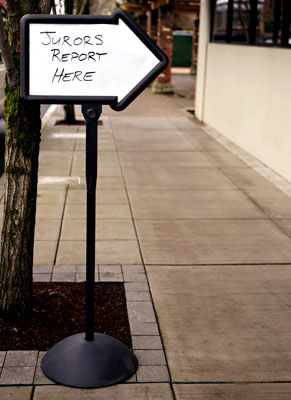 Social media is a mainstay in daily life. Over a billion people are registered users of Facebook. The Facebook logo and the logos of other social networking giants such as Twitter are quickly becoming as iconic as McDonald’s Golden Arches or Apple’s apple. As the popularity of social networking sites grew, industries scrambled to utilize such a powerful tool. The legal profession is no exception. Unfortunately, the combination of rapidly changing technology and slowly evolving law has created a potpourri of law in which little is settled or clear when it comes to social media and the courtroom. What is clear, however, is that attorneys who understand how social media can help or hurt their clients and have well-defined plans for tackling social media issues will be in the best position to successfully advocate for their clients.
Social media is a mainstay in daily life. Over a billion people are registered users of Facebook. The Facebook logo and the logos of other social networking giants such as Twitter are quickly becoming as iconic as McDonald’s Golden Arches or Apple’s apple. As the popularity of social networking sites grew, industries scrambled to utilize such a powerful tool. The legal profession is no exception. Unfortunately, the combination of rapidly changing technology and slowly evolving law has created a potpourri of law in which little is settled or clear when it comes to social media and the courtroom. What is clear, however, is that attorneys who understand how social media can help or hurt their clients and have well-defined plans for tackling social media issues will be in the best position to successfully advocate for their clients. Expanded access to information about potential jurors outside of the courtroom creates new ethical and practical dilemmas. What if an attorney discovers a case of clear juror bias using social media, such as a potential juror posting that the FBI is a corrupt organization full of nothing but liars? What if a prospective juror’s answers directly contradict the information on social media sites? Must the attorney tell the court? Must the attorney tell opposing counsel? Does the attorney have an ethical duty to do either as an officer of the court?
Expanded access to information about potential jurors outside of the courtroom creates new ethical and practical dilemmas. What if an attorney discovers a case of clear juror bias using social media, such as a potential juror posting that the FBI is a corrupt organization full of nothing but liars? What if a prospective juror’s answers directly contradict the information on social media sites? Must the attorney tell the court? Must the attorney tell opposing counsel? Does the attorney have an ethical duty to do either as an officer of the court? Conrad was ultimately seated as Juror #1. Several weeks into the trial, she submitted a note to the court asking if the jury would be instructed on the doctrine of respondeat superior and inquiring about vicarious liability. No party had used these terms during trial. Conrad’s note led Parse’s attorneys to conduct additional Internet research. Their research again revealed the Suspension Order, but this time it also matched Conrad’s address and household information to information on the Suspension Order. Still, they failed to raise the issue with the court, finding it “inconceivable” that Conrad had lied during voir dire.
Conrad was ultimately seated as Juror #1. Several weeks into the trial, she submitted a note to the court asking if the jury would be instructed on the doctrine of respondeat superior and inquiring about vicarious liability. No party had used these terms during trial. Conrad’s note led Parse’s attorneys to conduct additional Internet research. Their research again revealed the Suspension Order, but this time it also matched Conrad’s address and household information to information on the Suspension Order. Still, they failed to raise the issue with the court, finding it “inconceivable” that Conrad had lied during voir dire.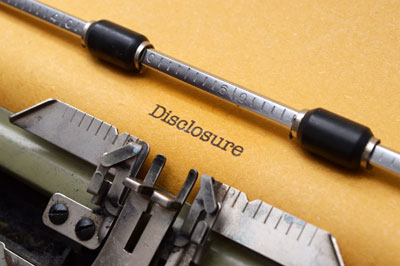 social media research into potential jurors. What it should do is convince defense counsel that if the research uncovers potential juror misconduct, it should be disclosed to the court immediately. If there is any doubt, such as the identity issue in Daugerdas, counsel should dig deeper until that doubt is resolved one way or another. If it is not resolved, the attorney should err on the side of disclosure. Counsel should not risk inadvertently waiving a client’s fundamental rights by failing to raise the issue with the court.
social media research into potential jurors. What it should do is convince defense counsel that if the research uncovers potential juror misconduct, it should be disclosed to the court immediately. If there is any doubt, such as the identity issue in Daugerdas, counsel should dig deeper until that doubt is resolved one way or another. If it is not resolved, the attorney should err on the side of disclosure. Counsel should not risk inadvertently waiving a client’s fundamental rights by failing to raise the issue with the court. The Pennsylvania Supreme Court recently adopted a new Code of Judicial Conduct. Effective July 1, 2014, new rules will apply to the extrajudicial activities for Pennsylvania judges. Businesses and nonprofits need to accommodate these changes to ensure that their board members from the judiciary comply with the code and to avoid adverse consequences in litigation. Litigation is costly enough for the private sector and defending against motions for disqualification will only add to that bill. Even organizations without judges serving as board members need to be aware of the potential impact of charitable donations and campaign contributions on their interests in litigation under the new code.
The Pennsylvania Supreme Court recently adopted a new Code of Judicial Conduct. Effective July 1, 2014, new rules will apply to the extrajudicial activities for Pennsylvania judges. Businesses and nonprofits need to accommodate these changes to ensure that their board members from the judiciary comply with the code and to avoid adverse consequences in litigation. Litigation is costly enough for the private sector and defending against motions for disqualification will only add to that bill. Even organizations without judges serving as board members need to be aware of the potential impact of charitable donations and campaign contributions on their interests in litigation under the new code. Effect on Organizations with a Judge on the Board
Effect on Organizations with a Judge on the Board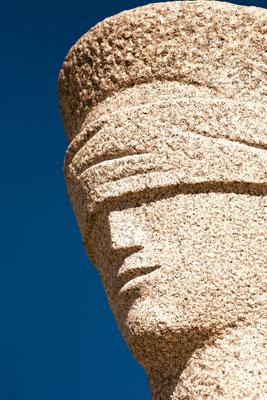 A Texas case from 2012 illustrates the potential for charitable giving to impact seemingly unrelated ongoing litigation. At the time, American Airlines and Sabre Holdings were engaged in extensive litigation and on the eve of trial in Texas state court. Sabre discovered that the presiding judge served on the board of a charity that worked with at-risk youths in Fort Worth and that American had made contributions to the charity. On Sabre’s motion, another judge ordered the presiding judge disqualified based on the appearance of impropriety that American’s charitable contributions created and reassigned the trial to another judge.
A Texas case from 2012 illustrates the potential for charitable giving to impact seemingly unrelated ongoing litigation. At the time, American Airlines and Sabre Holdings were engaged in extensive litigation and on the eve of trial in Texas state court. Sabre discovered that the presiding judge served on the board of a charity that worked with at-risk youths in Fort Worth and that American had made contributions to the charity. On Sabre’s motion, another judge ordered the presiding judge disqualified based on the appearance of impropriety that American’s charitable contributions created and reassigned the trial to another judge. According to some estimates, discovery costs account for between 50 and 90 percent of total litigation costs
According to some estimates, discovery costs account for between 50 and 90 percent of total litigation costs
 Indeed, in our hypothetical case, there were eight individuals involved in the decision to deny Plaintiff tenure. This number does not include any of Plaintiff’s other colleagues, her supervisor or potential expert witnesses. With a presumptive limit of five depositions, Plaintiff could be significantly limited in her ability to depose material witnesses. The university, for example, could convince the Court that an employment discrimination case involving $300,000 does not justify extending the presumptive limit and leave the Plaintiff without important information and ammunition for purposes of settlement or trial.
Indeed, in our hypothetical case, there were eight individuals involved in the decision to deny Plaintiff tenure. This number does not include any of Plaintiff’s other colleagues, her supervisor or potential expert witnesses. With a presumptive limit of five depositions, Plaintiff could be significantly limited in her ability to depose material witnesses. The university, for example, could convince the Court that an employment discrimination case involving $300,000 does not justify extending the presumptive limit and leave the Plaintiff without important information and ammunition for purposes of settlement or trial. particular classes of cases.
particular classes of cases.  Thomas G. Wilkinson, Jr., is a member of Cozen O’Connor in Philadelphia, where he practices in the Commercial Litigation Department (twilkinson@cozen.com). He is the Immediate Past President of the Pennsylvania Bar Association and past chair of its Civil Litigation Section.
Thomas G. Wilkinson, Jr., is a member of Cozen O’Connor in Philadelphia, where he practices in the Commercial Litigation Department (twilkinson@cozen.com). He is the Immediate Past President of the Pennsylvania Bar Association and past chair of its Civil Litigation Section.  Thomas M. O’Rourke is an Associate at Cozen O’Connor, where he practices in the Commercial Litigation Department (tmorourke@cozen.com). For a more detailed analysis of the proposed amendments, see their full length article in the Pennsylvania Bar Association Federal Practice Committee Newsletter for November 2013.
Thomas M. O’Rourke is an Associate at Cozen O’Connor, where he practices in the Commercial Litigation Department (tmorourke@cozen.com). For a more detailed analysis of the proposed amendments, see their full length article in the Pennsylvania Bar Association Federal Practice Committee Newsletter for November 2013.